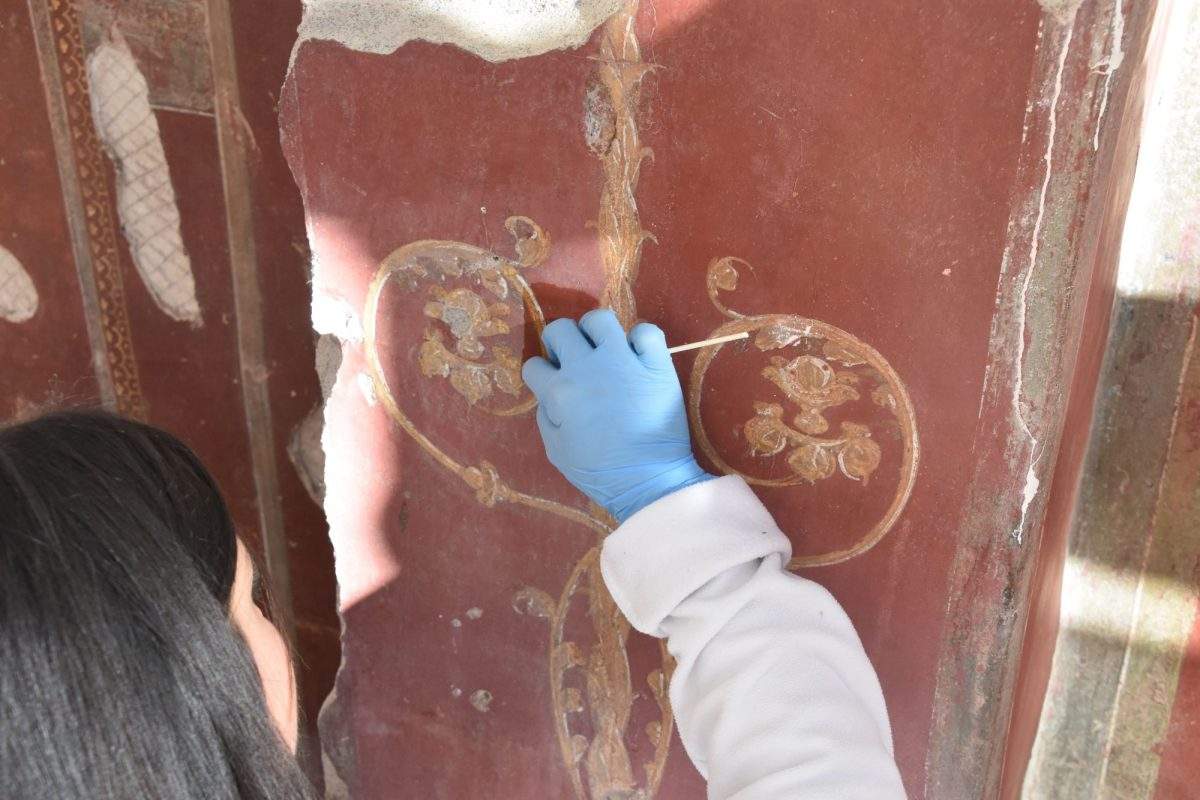After nearly nine years of closure and four of complicated restoration, Pompeii ’s Schola Armaturarum is ready to reopen its doors to the public. The building, the ancient school of gladiators, is located on the Via dell’Abbondanza and is one of the landmarks of the Campanian site: the upper part had collapsed on November 6, 2010. The collapse had had an international echo, had become a symbol of Pompeii’s degradation, had almost caused the resignation of the then minister of cultural heritage, Sandro Bondi (prime minister was Silvio Berlusconi: Bondi suffered heavy attacks and also complained about the lack of support from his political side), and had even been called “a disgrace for Italy” by the then president of the Republic, Giorgio Napolitano.
The collapse, however, also marked the beginning of Pompeii’s rebirth, and now the painstaking restoration conducted on the Schola Armaturarum (starting in 2015) has finally led to the reopening, which will be celebrated on Thursday, January 3, 2019, at 11 a.m., when Pompeii’s director general, Massimo Osanna, will meet the press to illustrate the Schola’s reopening project, together with the Ales restorers who have been overseeing the frescoes’ recovery. This is the first step toward a more articulated project of fruition and musealization, extended also to the rooms behind, which will allow the paintings and objects to be seen in their place of discovery. On the same day, the public will be able to hear an account of the restoration work from the same restorers who supervised it.
The Schola, as it is specified on the Pompeii Archaeological Park website, was built “a few years before the eruption and housed the headquarters of an important military-style association, as indicated by the representations of trophies with weapons at the base originally found on the exterior jambs. Inside, affiliates met to plan military activities and games that would take place in the Palestra Grande or Amphitheater. The building consists of a large hall enclosed on the street by a large wooden transenna, which had been reconstructed on the basis of impressions left in the ashes. Inside, on the recesses of the walls, there were shelves where military armor and trophies were displayed.” The 2010 collapse was caused by hydrogeological instability, which has been accentuated in recent years by climate change. The Archaeological Park, as mentioned above, thus initiated in 2015 a major restoration project of the building, which from a symbol of “collapses” has now become the emblem of the “revitalization” of the city.
 |
| Pompeii, Schola Armaturarum reopens after nearly 9 years: collapse had almost led to Sandro Bondi's resignation |
Warning: the translation into English of the original Italian article was created using automatic tools. We undertake to review all articles, but we do not guarantee the total absence of inaccuracies in the translation due to the program. You can find the original by clicking on the ITA button. If you find any mistake,please contact us.